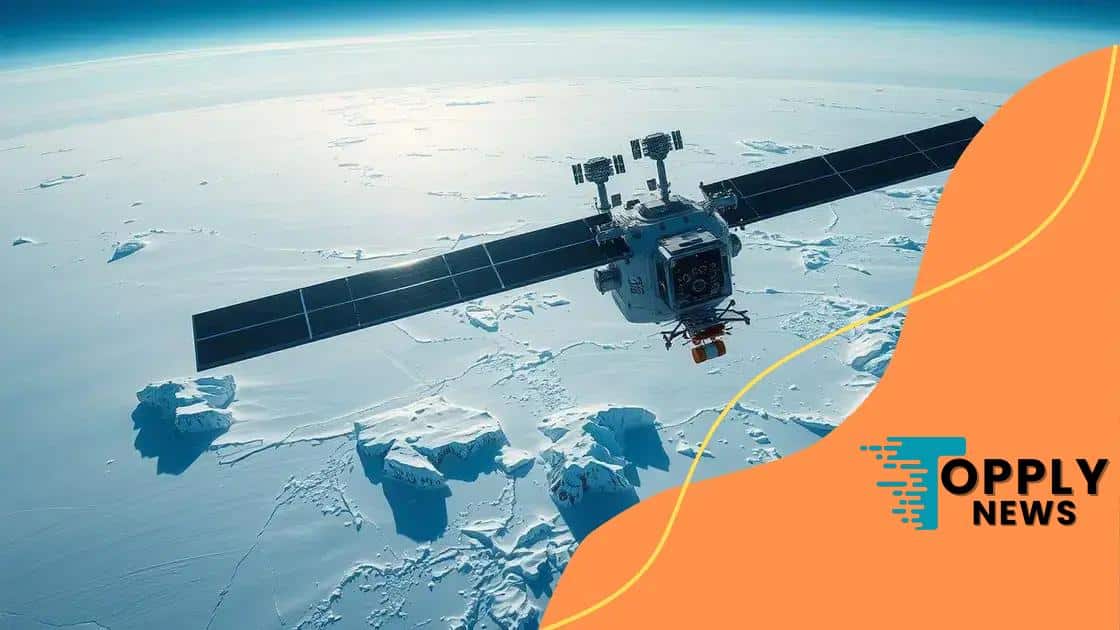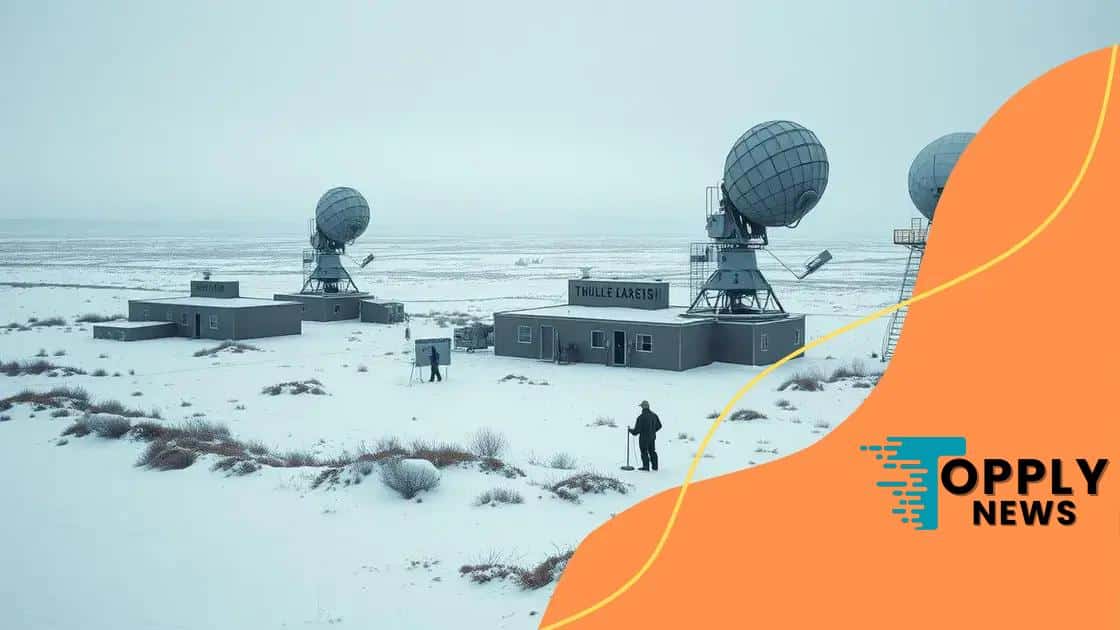US spy agencies Greenland surveillance: uncovering secrets

US spy agencies utilize advanced surveillance technologies to enhance national security, enabling faster threat detection while raising concerns about privacy and civil liberties.
US spy agencies Greenland surveillance has become a hot topic as these organizations expand their reach. With unique geographical features, Greenland presents challenges and opportunities for intelligence gathering. Let’s dive into how this affects global politics.
the role of US spy agencies in global surveillance
The role of US spy agencies in global surveillance is critical today. These agencies utilize various tools and technologies to gather intelligence worldwide. Understanding their operations helps shed light on national security efforts.
Key Agencies Involved
Several key agencies are primarily responsible for surveillance activities. Each plays a distinct role:
- Central Intelligence Agency (CIA)
- National Security Agency (NSA)
- Defense Intelligence Agency (DIA)
- Federal Bureau of Investigation (FBI)
These agencies collaborate to ensure robust security measures. They gather intelligence from different sources, including satellite images and electronic communications.
Methods of Surveillance
The methods of surveillance employed by US spy agencies are diverse and sophisticated. For instance, satellite technology allows them to monitor vast areas remotely.
- Signal intelligence (SIGINT)
- Human intelligence (HUMINT)
- Geospatial intelligence (GEOINT)
- Cyber intelligence
Each method serves a purpose. SIGINT focuses on intercepting communications, while HUMINT involves gathering information directly from sources.
Furthermore, collaboration with international allies enhances the effectiveness of surveillance efforts.
As technology evolves, the tactics used by these agencies must adapt. This evolution helps them address new challenges and maintain security.
how Greenland’s geography impacts intelligence gathering
Understanding how Greenland’s geography impacts intelligence gathering is essential for US spy agencies. The unique features of this vast landscape create specific challenges and advantages for surveillance operations.
Remote and Vast Terrain
Greenland is the world’s largest island, mostly covered by ice. This remote environment can make it hard to access certain areas. However, this isolation can also hide activities from prying eyes.
- Limited population centers make few places for spies to hide.
- Natural barriers, such as glaciers, can impede movement.
- Access to ocean routes for tactical naval surveillance.
The challenges of the terrain require specialized methods. For instance, using satellites becomes crucial to see areas that are otherwise inaccessible. The harsh weather conditions can also affect these operations.
Impact on Communication
Communication in Greenland can be difficult due to its geography. Remote areas lack reliable infrastructure, impacting intelligence operations.
- Cellular networks are sparse, making covert operations more complex.
- Satellite communication must be relied upon for data transfer.
- Weather conditions can disrupt signals and connectivity.
These factors motivate intelligence agencies to invest in advanced technology for effective communication in challenging environments. Understanding the geography allows agencies to plan better and adapt their strategies.
In conclusion, the unique features of Greenland’s geography present both challenges and opportunities for intelligence gathering. Agencies must be skillful in adapting their approaches to effectively monitor situations in this dynamic environment.
historical context of surveillance in Greenland

The historical context of surveillance in Greenland is fascinating and complex. For centuries, this icy land has been a strategic location that attracted the interest of various nations. Understanding its history can provide insight into current surveillance operations.
Early Exploration and Military Interest
In the early 20th century, Greenland began to capture the attention of military powers. As nations explored Arctic regions, the importance of Greenland for military strategies became clear. The island’s remote location made it a valuable asset during both World Wars.
- World War II saw increased military presence in Greenland.
- The establishment of bases aimed at monitoring enemy activities.
- Geopolitical interest in the Cold War increased surveillance operations.
During this time, American and Allied forces started significant surveillance activities. They built bases and developed technologies to gather intelligence about Soviet movements and operations.
The Cold War Era
The Cold War marked a turning point in Greenland’s surveillance history. The U.S. established Thule Air Force Base in 1951. This base became a center for military operations and intelligence collection.
- Thule acted as a pivotal point for monitoring balloon and satellite tests.
- It facilitated air defense and early warning systems through radar.
- Greenland’s remote nature allowed discreet surveillance missions.
As the Cold War progressed, the focus shifted to gathering intelligence on Soviet activity in the Arctic. This led to advancements in technology and techniques for effective surveillance.
In the years that followed, Greenland continued to be integral to international surveillance efforts. Understanding this historical context helps illuminate the current operations of US spy agencies and their strategic objectives in the region.
modern technology used in surveillance operations
The modern technology used in surveillance operations is constantly evolving. These advancements enable US spy agencies to gather intelligence more effectively than ever before. Various tools and techniques play crucial roles in these operations.
Satellite Technology
One of the primary technologies in surveillance is satellite imaging. Satellites can take high-resolution images of large areas, allowing agencies to monitor changes on the ground.
- Imagery can show troop movements and infrastructure changes.
- Real-time data helps in making quick decisions.
- Advanced sensors capture information in different weather conditions.
These capabilities make satellites essential for intelligence gathering in remote areas like Greenland.
Ground-Based Sensors
In addition to satellite technology, ground-based sensors are vital for surveillance. These sensors can detect activities and movements in specific locations.
- Motion detectors identify unusual movements.
- Audio surveillance picks up sounds from strategic locations.
- Environmental sensors monitor changes in climate or activity levels.
These tools enable agencies to gather localized intelligence, ensuring comprehensive coverage of target areas.
Furthermore, drones have revolutionized modern surveillance. Drones can provide aerial views and gather data from hard-to-reach locations. They can be equipped with cameras and sensors to enhance surveillance efforts and even conduct reconnaissance without risk to personnel.
Cyber Surveillance
Another important aspect of modern surveillance is cyber technology. Cyber surveillance involves monitoring online activities, communications, and data transfers.
- Data analytics tools process large amounts of information quickly.
- Cyber intelligence helps track potential threats.
- Encryption breaking techniques enable agencies to intercept secure communications.
By combining these technologies, US spy agencies can enhance their surveillance operations, providing greater security and intelligence in a rapidly changing world.
implications of enhanced surveillance for national security
The implications of enhanced surveillance for national security are significant and multi-faceted. As agencies develop better technologies, their ability to monitor potential threats improves greatly. This has direct consequences for public safety and international relations.
Increased Awareness of Threats
Enhanced surveillance allows agencies to identify and assess threats more effectively. With advanced technologies, intelligence can be gathered quickly.
- Faster detection of terrorist activities.
- Monitoring of cyber threats in real-time.
- Tracking of criminal networks through data analysis.
This increased awareness enables timely interventions, which can prevent attacks before they happen. Consequently, it can help save lives and maintain public order.
Impact on Privacy and Civil Liberties
However, these advancements also raise concerns about privacy and civil liberties. Many people worry about government overreach and constant monitoring.
- The balance between security and privacy is a hot debate.
- Public skepticism can emerge from aggressive surveillance tactics.
- Legal frameworks must adapt to protect citizens’ rights.
Finding this balance is crucial for maintaining trust between the government and the public. Agencies must implement measures to ensure transparency and accountability in their operations.
International Relations and Cooperation
Enhanced surveillance capabilities also affect international relations. Countries may view expanded surveillance as a threat or as an advantage in global politics.
- Alliances may strengthen through shared intelligence.
- Potential tensions arise from spying on allies.
- Impact on diplomatic negotiations.
These dynamics can reshape how nations interact and cooperate. As intelligence agencies improve their methods, they must navigate the complexities of international diplomacy while securing national interests.
FAQ – Frequently Asked Questions about Enhanced Surveillance and National Security
What is the impact of enhanced surveillance on national security?
Enhanced surveillance improves the detection of threats and allows for quicker responses, thus enhancing national security.
How does surveillance technology affect privacy?
Surveillance technology raises concerns about civil liberties, leading to debates about the balance between security and individual privacy.
What are the implications for international relations?
Enhanced surveillance can strengthen alliances through shared intelligence but may also create tensions among countries if perceived as intrusive.
Why is balance between security and privacy important?
Maintaining a balance ensures public trust in government while still protecting citizens from potential threats.





